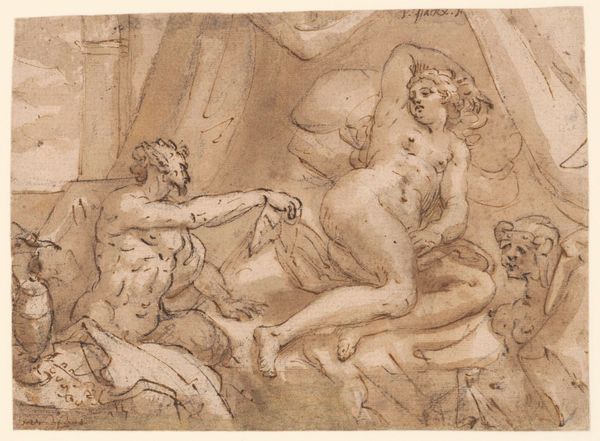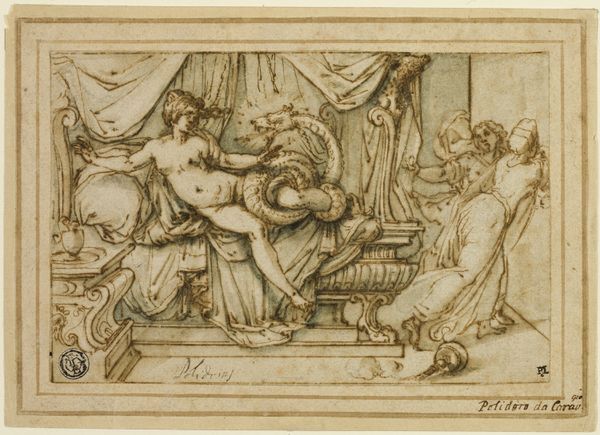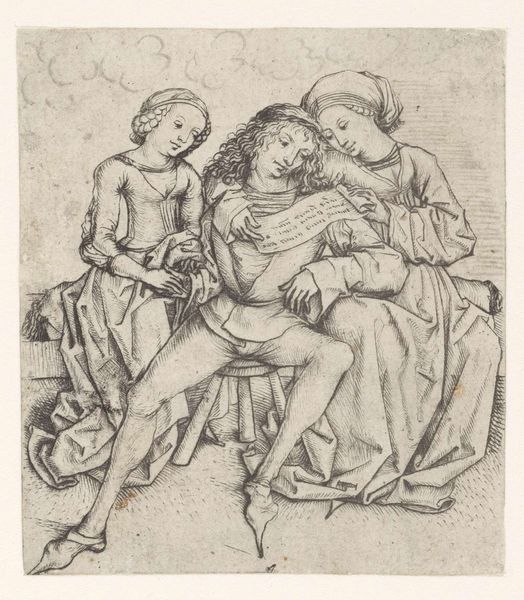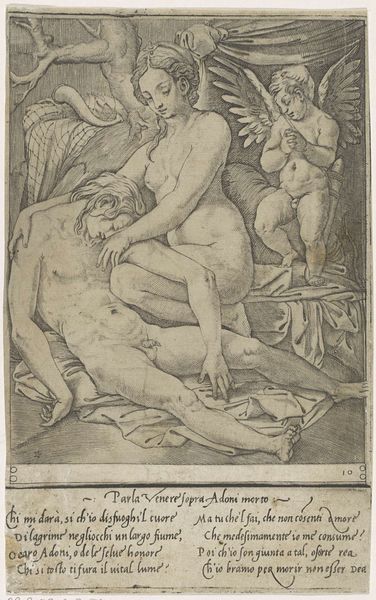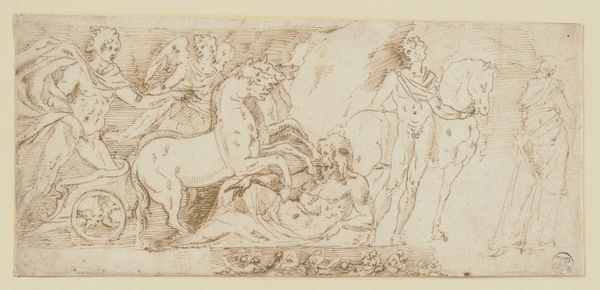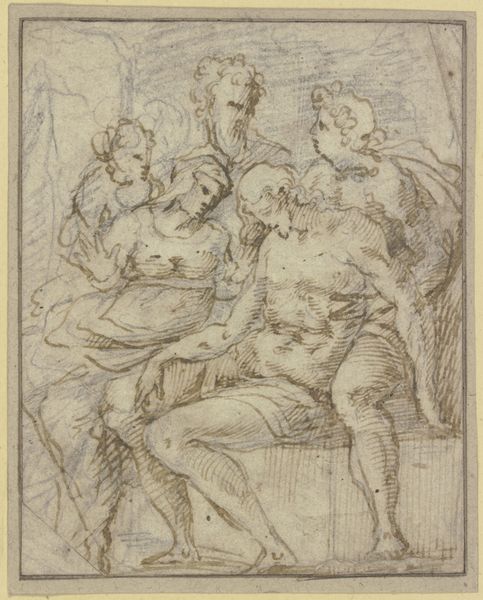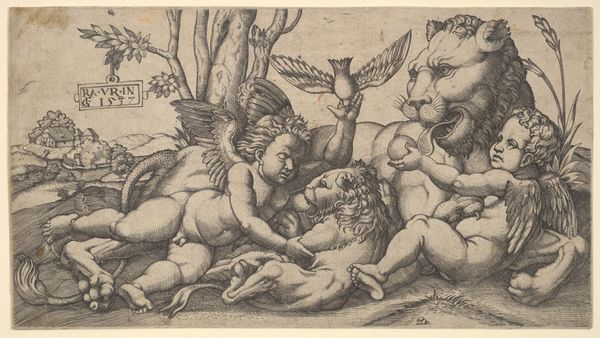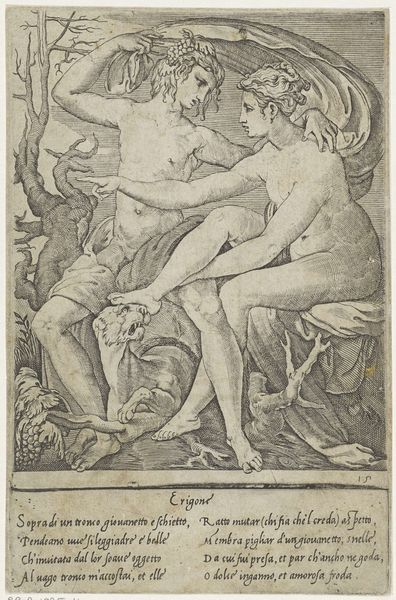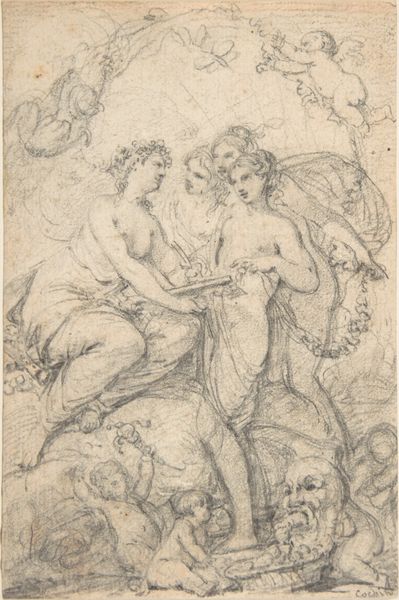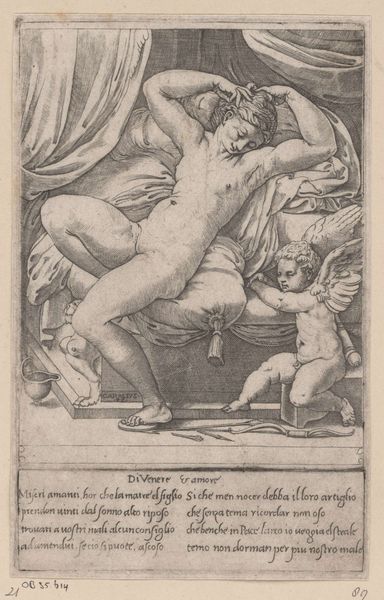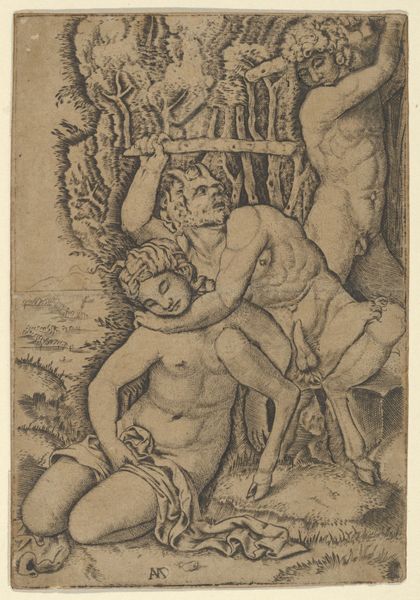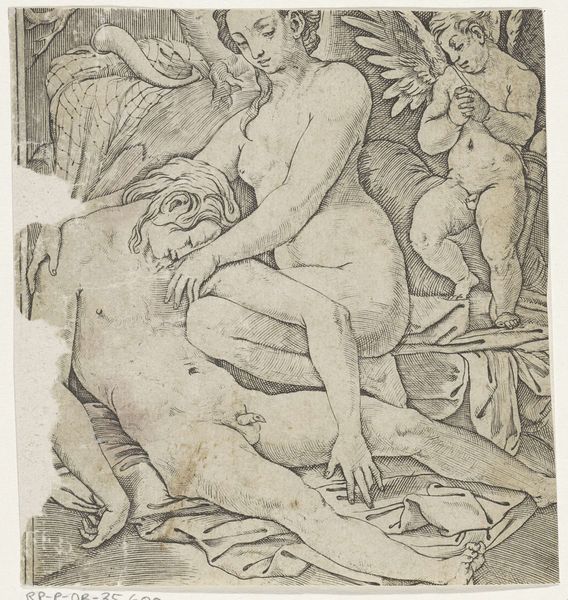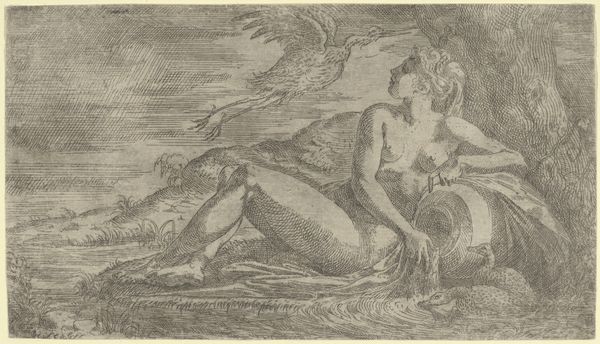
Ontwerp voor een reliëf met Amor en een liggende figuur van Anacreon 1823
0:00
0:00
drawing, paper, ink
#
drawing
#
neoclacissism
#
allegory
#
figuration
#
paper
#
ink
Dimensions: height 168 mm, width 217 mm
Copyright: Rijks Museum: Open Domain
Editor: Here we have Bertel Thorvaldsen’s 1823 ink drawing on paper, "Ontwerp voor een reliëf met Amor en een liggende figuur van Anacreon," currently held at the Rijksmuseum. The sketchiness gives it an air of spontaneity, even playfulness, contrasting with the rather serious subject matter of classical figures. What can you tell us about it? Curator: This drawing encapsulates the Neoclassical fascination with antiquity. Thorvaldsen, as a leading sculptor of his time, was deeply immersed in Greco-Roman ideals. However, let’s think critically about how these ideals were employed in the 19th century. Neoclassicism often served as a visual language of power, reflecting imperial ambitions and constructing narratives around masculinity, race, and virtue. How do you see these power dynamics at play here, especially considering the intimate interaction between Amor and Anacreon? Editor: Well, Amor is often depicted as subordinate to other gods, but in this image, it seems his body is centered in a way that establishes a different kind of power dynamic in his relationship to the older Anacreon, or at least to the viewer’s interpretation. Curator: Exactly. Think about who Anacreon was – a Greek lyric poet celebrated for writing about love and wine, often depicting homoerotic themes. Thorvaldsen presents a softened version, perhaps alluding to a specific societal construction of masculinity during his time. Considering his audience, what might Thorvaldsen be subtly suggesting about desire, love, and acceptable forms of intimacy? Can this work be read as an articulation of social anxieties or even as an allegory? Editor: That’s a fascinating perspective. I was initially focused on the surface level classicism, but it’s true; there's more going on here about what society thought about relationships, pleasure, and power. It makes the drawing feel so much more alive. Curator: Precisely! By exploring art through this intersectional lens, we unpack not only its aesthetic qualities, but also the social ideologies that shaped its creation and reception. Editor: Definitely, and that pushes us to think about our own biases as modern viewers too.
Comments
No comments
Be the first to comment and join the conversation on the ultimate creative platform.
